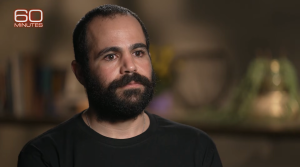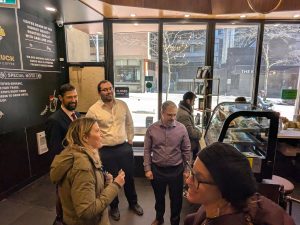The view from Michael Steinhardt’s office in New York City shoots straight up Fifth Avenue, cutting along the east side of Central Park, with the gracious tower of the Sherry-Netherland on the right and the top of the Crown Building on the left. One of the original hedge fund gurus, Michael launched his fund in 1967, making him a pioneer in what has become an industry of staggering size and scope.
Michael grew up in a lower-middle-class neighbourhood in Brooklyn. Money was scarce, so he was motivated. Working exhaustively at trying to beat the market, by the age of 55 he had made pots of money. He is truly a self-made billionaire. But when Michael retired from the hedge fund world, he was still young and was looking for what he calls a “practical application” for some of his fortune. He wanted to invest in something meaningful.
“When I decided to retire, I said to myself, ‘I’m going to do something from this point in my life which is ennobling and virtuous.’ I decided to devote basically full time and effort to what I called the Jewish future.” He began to deploy his analytical thought process to the notion of youth trips to Israel as a means of “enriching and deepening” the long-term staying power of the Jewish People.
The notion of Michael and me working together is its own miracle. I’m thin, Michael’s not. I’m an inheritor, Michael is self-made. I’m a long-term brand builder with a 20-year time horizon, Michael is a trader with a 90-second attention span. I’m an optimist, he’s a pessimist. And as others would add, I’m the establishment while Michael’s the rebel.
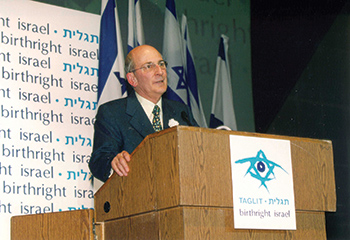
Despite our differences, Michael and I both felt it was high time for a new mechanism that would allow Jews in the Diaspora to get to know Israel and allow Jews in Israel to get to know those in the Diaspora.
In 1998, Michael and I were both at a gala in Jerusalem along with a few hundred other people. It was a lovely June evening, and after dinner, the two of us were on the terrace. If there is a metaphorical bed where Birthright Israel was conceived, it’s there.
We sat on a wall overlooking the Valley of the Cross. Michael explained his idea of a totally free 10-day trip to Israel for young adults – a gift from one generation to another as a way to learn about heritage and culture and to build a connection to the Jewish homeland.
“That is very audacious,” I apparently said to him.
“And after saying it was audacious, he [Charles] said he would be my partner,” he says.
* * *
Before there was a glint of in Michael’s eyes or mine, there was Yossi Beilin. For more than 30 years, Beilin has been at the centre of Israeli political life. Born in Israel a month after the country declared independence in 1948, Beilin served in the cabinets of three prime ministers – Rabin, Peres, and Barak – and has been justice minister and economy minister, as well as deputy minister of finance and foreign affairs. He has been intimately involved in peace talks with the Palestinians, in particular the secret talks that led to the Oslo accords.
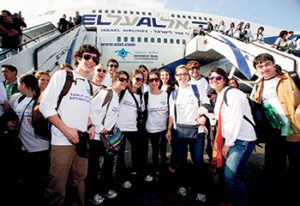
Beilin strongly believed in the need for trips for Diaspora youth. I asked him where he would get the money. He said from the Jewish Agency – shutter it, Beilin said, and use its $300 million budget to bring every Jewish 17-year-old from outside of Israel on a trip there.
I told Beilin that his scheme would bankrupt the Jewish world. But he was on to something.
Michael and I began holding consultations with educators about how to set it up and soon began negotiating. For about a year, we worked out the details, but one issue almost capsized the whole enterprise. Michael and I fundamentally disagreed about whether the trip should be free or not. Michael pushed for free. I thought there should be a nominal charge of $250 or $300, an amount within reach of most young people. My reasoning was that you only get what you pay for, the kind of life lesson my dad would have imparted.
To break the impasse, we hired a research firm to sound out how potential participants felt about the question. Most thought that if the trip was free, there had to be a gimmick. The research report was presented, and Michael might as well have opened the nearest window and tossed it out. He basically said he didn’t give a damn what the research said, the trip had to be free. “It couldn’t be another Jewish discount,” he said. “It has to be a gift.” It’s too important to the future of the Jewish People, he said.
We agreed on a saw-off: participants would put down a deposit of $250 that would be refundable if they completed the trip. But Michael was right: the fact that the trip is a gift – all expenses paid – quickly became its signature.
Once we were a united front, we needed other philanthropists to get behind it and began asking people for a million dollars each year for five years. As Michael says, it wasn’t easy to get those commitments, but we managed to get 14 of them, including from my brother Edgar, who I have to say was very supportive (although at first he said no). He and I each initially contributed $10 million, but we needed much more to get it up and running properly. Specifically, we wanted significant contributions from Jewish organizations and from the Israeli government.
READ: AZRIELI FOUNDATION DONATES $5 MILLION TO BIRTHRIGHT
Our lawyer, Tzaly Reshef, recalls a meeting before we knew how much we would get from the Israelis: “I said, ‘Charles, you can’t do it, you’re taking a risk.’ He said, ‘Look, I thank you for your advice. I’m jumping into the water.’ And he jumped into the water. My advice was ‘Don’t do it,’ but he did it anyhow. The only way to start it was just to do it. He said, more or less, ‘It’s my money, I’m taking the risk.’”
Shimshon Shoshani, at the time director general of the Jewish Agency for Israel, was brought on as the first CEO of Birthright Israel. A true mensch, the program would never be what it is without him.
Shimshon remembers the meeting that Tzaly described a bit differently. As he says, up until that point, there had been a lot of talk. There was also talk of another war in Israel in the summer of 1999. He says he told us that this was the moment of truth, and in order to plan properly for the first trip in December of 1999, we had to make the decision to go ahead. Otherwise “the blah, blah will continue.”
READ: ISRAEL SUMMER PROGRAMS: SUN, SMILES AND SAFETY
Shimshon says he’ll never forget our faces. I looked at Michael, and Michael looked at me. Michael’s face got red. I moved from one side of my chair to the other. We each looked at our wives, and all of our heads were down. Shimshon says we weren’t used to the Israeli, non-polite style, a direct way of putting the issue on the table. He felt he was taking a risk, that he could very well have been thanked and dismissed right then and there for dictating to two rich philanthropists. Instead, he recalls that I piped up and said, “Michael, we are going to do it, aren’t we?” And that Michael said, “Yes, we promised.”
* * *
Critics started banging the table right from the get-go. The so-called Jewish institutional world felt threatened. Our concept was dismissed as “Bronfman’s blunder and Steinhardt’s stupidity.” Community organizations were already running trips, but trips that cost participants money. Here were two rich guys, coming along to offer totally free excursions.
“Suddenly, there’s a new guy in town (and) he looks like a sexy guy,” recalls Tzaly.
Among the early supporters was Benjamin Netanyahu, who was also prime minister from 1996 until mid-1999, the year Birthright Israel launched. He had signed a letter of support but was no longer PM when we sought funds from the government. It was crucial that we get government money, given the scope of what we were trying to do. We needed guides, we needed standards, and we needed security. We needed buy-in from the top. That wouldn’t be easy, given that the country had never spent a dime to fund programs for young people in the Diaspora. It had its own problems that required cash. The feeling among some in government was, “Why should we spend money on Diaspora kids when our own kids need looking after?”
The head of the Jewish Agency went before the Knesset finance committee to argue against any funding. In the same way, the American Jewish federations rebelled against what they considered to be two rich bastards telling them what to do. They could gripe all they wanted, but the monopoly on dealing with the Diaspora was about to vanish.
Bullheaded, we didn’t look back. Tzaly (and his partner Jonathan Schiff ) put together the structure of the company, one-third philanthropists, one-third government and one-third Jewish organizations. The key was to allow the new organization to be entrepreneurial. The $14 million a year given by the philanthropists was supposed to be matched by commitments from the government as well as the Jewish Agency and the federations in North America, to give the project a starting budget of approximately $40 million. The model was devised with a small management group, with the actual tours outsourced to both NGOs and for-profit organizations. Our mantra was “let the marketplace decide.” In effect, we were a franchiser and the trip organizers were franchisees, all of whom had to abide by very stringent standards set by Shimshon and his team.
“This is the only way a small organization can bring 45 thousand students (a year),” says Tzaly.
* * *
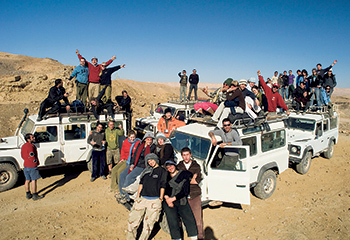
What the groups would see and hear on the trips was developed with great care. First of all, the trips had to be fun. My view was that if people enjoyed what they were doing, they would learn. Second, there had to be absolutely no coercion to become religious or non-religious, to embrace Judaism or not to embrace it. The idea was to leave a lasting impression, to get the disinterested interested.
Two people who have been integral to the success of Birthright are Prof. Leonard Saxe of Brandeis University, who has conducted our research, and Barry Chazan, who designed the original education program. As they outline in their book Ten Days of Birthright Israel: A Journey in Young Adult Identity, the trip had to be more than just a tour. It required rich emotional and intellectual content, the framing of which was crucial. It would most certainly not be overt indoctrination, nor would it veer into propaganda or present just one political viewpoint. It would also not just be about historic sites and the Holocaust, but would strive to show that Israel is a modern, contemporary society. Not only a litany of tragedies and defeats, but also a country of victories and successes.

As well, the participants would have a chance to listen to speakers ranging from former prime ministers to academics, to business leaders, to writers; vastly different from the kinds of Jewish authority figures – mostly rabbis – they might have been accustomed to listening to at home. Guides were to be officially accredited by the government, and it was hoped that by travelling together on buses of 40 people, there would be a bonding experience over the course of the 10 days.
There was always the question, though: Should Birthright Israel simply be a trip, as many believed, or should it have serious educational value? We insisted that if it were to be a gift, it required a sound educational foundation. Barry Chazan led the task force on creating that educational experience.
Due to his dogged determination, against all odds, we prevailed in the view that education was critical.
* * *
Our target market was – and is – the least engaged Jewish youth, those who never wanted to go on a trip to Israel. The zealots had already been or would go. Most Diaspora Jews, in fact, had not been to the country. Among youth in North America (the first trips were only from North America), at best about 30 per cent had travelled there. Of those we were targeting, Israel was not even in the top 20 destinations of the countries they wanted to visit.
The early advertising that appeared in college newspapers verged on the irreverent. We wanted something edgy. In one ad, there’s a mohel with a knife, poised to perform a circumcision, with a line that says, “Sometimes it’s hard to be Jewish.” Then there’s a picture of a group of smiling young people bobbing in the Dead Sea, accompanied by another line that says, “And sometimes it’s not.”
We honestly didn’t know how many would apply or whether the enterprise would flop out of the starting gate. The day the applications were due, we were nervous, pacing our office, waiting for the log-ons.
READ: DIASPORA HAS A HUGE STAKE IN ISRAEL, ZIONIST LEADER SAYS
The response was overwhelming. For the first trip, there were 12,000 applicants for 8,000 spaces. Interest was so intense, there was a lottery for the spots, and it wasn’t long before there were substantial waiting lists. What that also did for us was create a natural control group for evaluation afterward – we had a group that went, and a group that didn’t. They were all the same demographically, so we could examine the impact on the ones that went versus the ones who did not.
The first planeload arrived at Ben- Gurion Airport on Dec. 24, 1999. Birthright Israel was a go.
Excerpt from Distilled: A Memoir of Family, Seagram, Baseball and Philanthropy by Charles Bronfman with Howard Green © 2016 by Charles Bronfman. Published by HarperCollins Publishers Ltd. All rights reserved.


